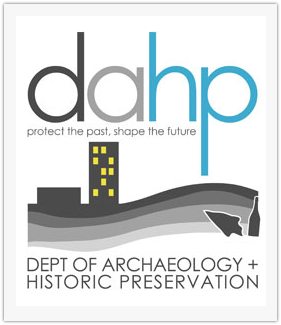2025 SHPO Awards
Dr. Allyson Brooks, Washington State Historic Preservation Officer (SHPO) has announced the 2025 award recipients for Outstanding Achievements in Historic Preservation. Each year, the Washington SHPO recognizes people, projects, and organizations throughout the state that have achieved distinction in the field of historic preservation. The 2025 awardees come from Franklin, Grays Harbor, King, Kittitas, Skagit, Snohomish, Spokane, Whatcom and Whitman counties.
Outstanding Rehabilitation – Valerie Sivinski Award
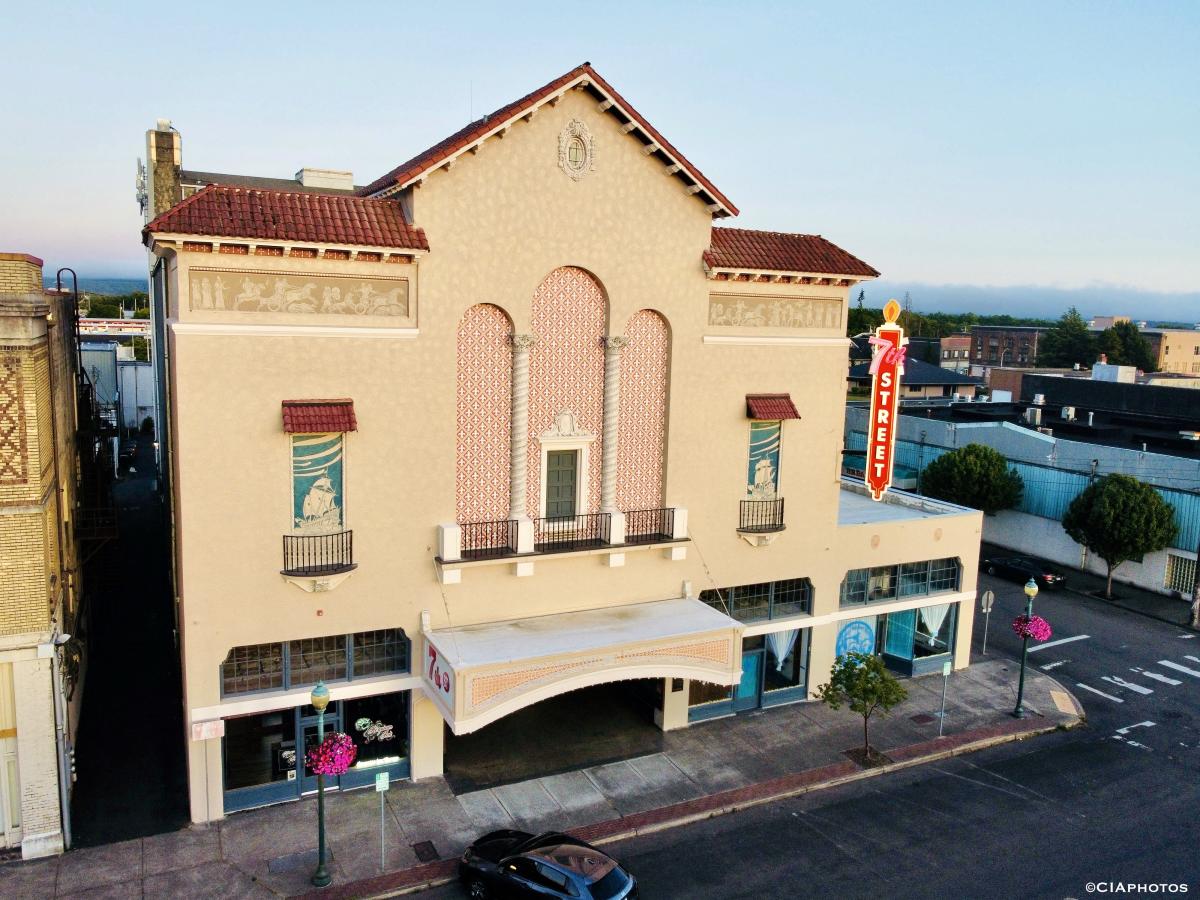 7th Street Theatre, Hoquiam, Grays Harbor County
7th Street Theatre, Hoquiam, Grays Harbor County
The 7th Street Theatre Association is recognized for their grass-roots rehabilitation of this historic Hoquiam movie palace. Over the course of forty years, a small group of dedicated volunteers raised and invested approximately four million dollars to restore the crown jewel of Grays Harbor. Their years of hard work raising funds and rehabilitating the historic building’s interior culminated in a ribbon cutting in August to celebrate the completion of its exterior restoration. Constructed in 1928, the 7th Street Theatre is the only surviving atmospheric theater in Washington state. Atmospheric theatres, popular in the 1920s, were designed to evoke a sense of being outdoors using lighting, architectural elements and ornamentation. The 7th Avenue Theatre was listed in the National Register of Historic Places in 1987.
Weyerhaeuser Office Building, Everett, Snohomish County
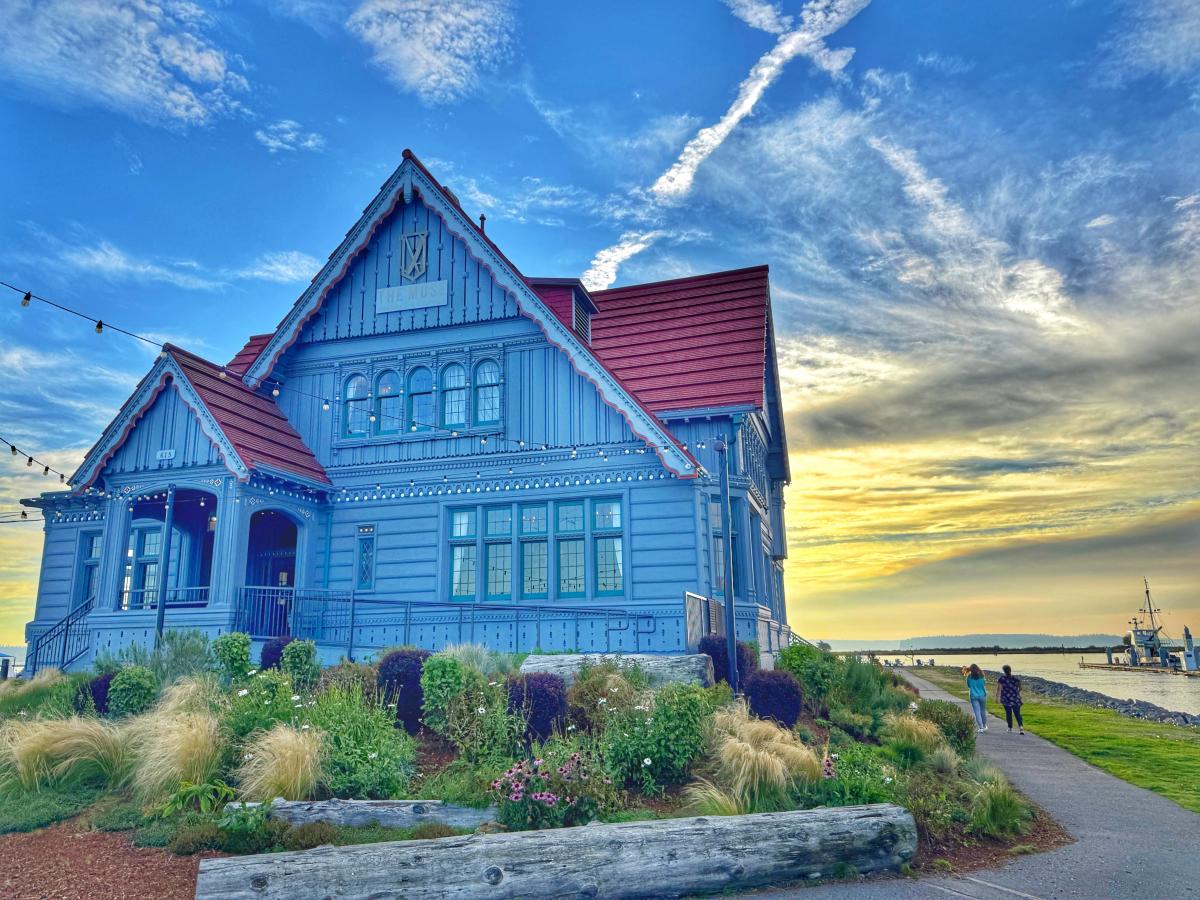 The Port of Everett, together with its partner NGMA Group and architects, The Schuster Group, are recognized for the rehabilitation of Everett’s historic Weyerhaeuser Office Building. Constructed in 1923, the building was built entirely of Pacific Coast timber and was intended to illustrate the possibilities of Weyerhaeuser lumber for the construction of buildings both beautiful and practical. Weyerhaeuser vacated the property in 1983, donating it to the Port of Everett. It reopened to the public in 2023 as The Muse Whiskey & Coffee and event venue. From the moment Jack and Jin of NGMA Group saw the Weyerhaeuser Building, they knew this beautiful historic landmark needed to be preserved and restored so the community could continue to enjoy its rich history and its legacy in Everett. Every member of the project team worked diligently to preserve and honor every possible original aspect of the Weyerhaeuser Office Building.
The Port of Everett, together with its partner NGMA Group and architects, The Schuster Group, are recognized for the rehabilitation of Everett’s historic Weyerhaeuser Office Building. Constructed in 1923, the building was built entirely of Pacific Coast timber and was intended to illustrate the possibilities of Weyerhaeuser lumber for the construction of buildings both beautiful and practical. Weyerhaeuser vacated the property in 1983, donating it to the Port of Everett. It reopened to the public in 2023 as The Muse Whiskey & Coffee and event venue. From the moment Jack and Jin of NGMA Group saw the Weyerhaeuser Building, they knew this beautiful historic landmark needed to be preserved and restored so the community could continue to enjoy its rich history and its legacy in Everett. Every member of the project team worked diligently to preserve and honor every possible original aspect of the Weyerhaeuser Office Building.
Interstate Telephone Exchange, Pullman, Whitman County
Property owners, David and Jenny Harder are recognized for their rehabilitation of the Interstate Telephone Exchange Building in Pullman. The building had been unoccupied since 1975. During this time, it was unheated, the roof leaked, power and water had been disconnected, and numerous windows were broken. Despite this, the building’s historical integrity remained. The current owners undertook the complete restoration of the building’s exterior, interior and mechanical and electrical systems. They describe the opportunity to refurbish this fireproof, compact gem as a privilege. The project was completed in 2025, upon which it became the home office for the Harder’s cultural resource management company, Plateau CRM, which performs archaeological and historical contracting and consulting services.
YWCA - Seattle, King County
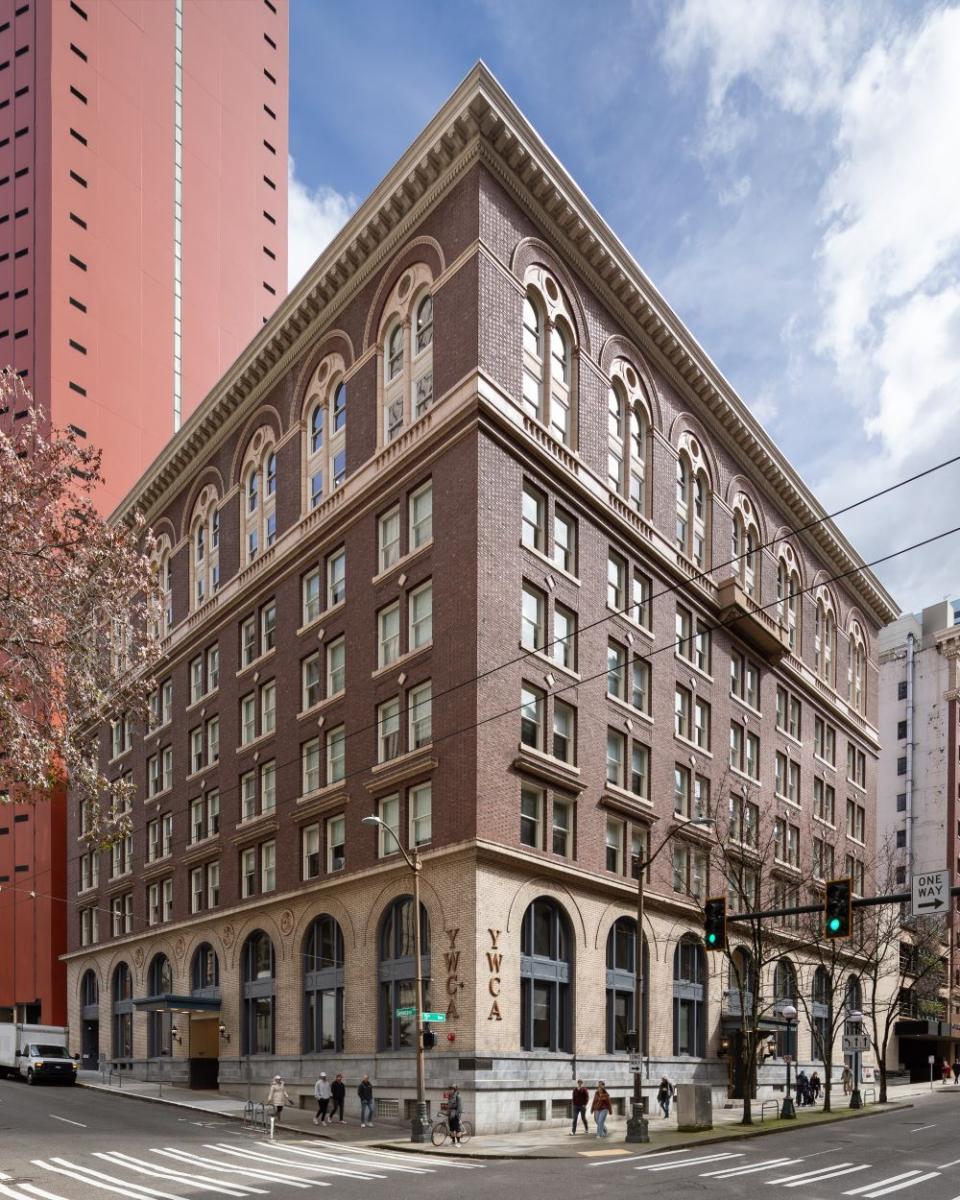 YWCA Seattle, SMR Architects, Andersen Construction, and developer, JH Brawner are recognized for the rehabilitation of the YWCA building in downtown Seattle. Originally constructed in 1914, rehabilitation of the National Register-listed building included renovating the top five floors to accommodate 114 units of permanently affordable housing for low-income and formerly unhoused residents. In addition, all major systems were replaced, and the first two floors were redesigned while preserving the historic exterior and interior elements of the building. These improvements and upgrades were necessary for the long-term protection of housing and service delivery at YWCA’s flagship location. Founded over 130 years ago, YWCA Chapter of Seattle, King and Snohomish counties is the largest and longest-running nonprofit in the region dedicated to the needs of women and girls. (Image courtesy of William Wright photography)
YWCA Seattle, SMR Architects, Andersen Construction, and developer, JH Brawner are recognized for the rehabilitation of the YWCA building in downtown Seattle. Originally constructed in 1914, rehabilitation of the National Register-listed building included renovating the top five floors to accommodate 114 units of permanently affordable housing for low-income and formerly unhoused residents. In addition, all major systems were replaced, and the first two floors were redesigned while preserving the historic exterior and interior elements of the building. These improvements and upgrades were necessary for the long-term protection of housing and service delivery at YWCA’s flagship location. Founded over 130 years ago, YWCA Chapter of Seattle, King and Snohomish counties is the largest and longest-running nonprofit in the region dedicated to the needs of women and girls. (Image courtesy of William Wright photography)
Outstanding Stewardship
C Street Vault, Connell, Franklin County
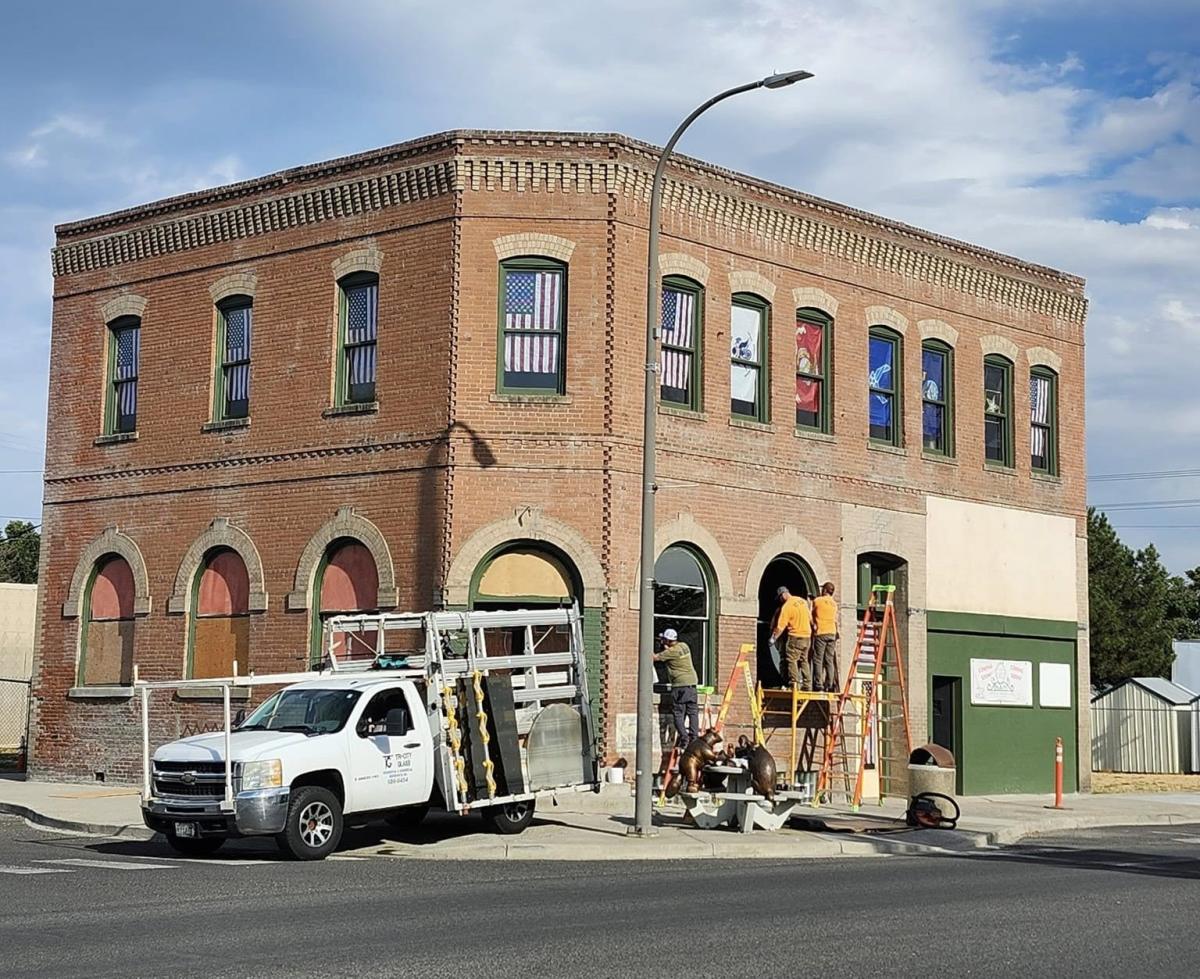 Shelly Harper, Executive Director of the Noth Franklin Heritage Museum and Connell City Councilmember has championed the ongoing restoration of the C Street Vault. The building is named for the original main street in Connell and the vault that still graces the historic bank building. The building subsequently served as a café, hotel and finally an American Legion Post. The C-Street Vault was donated to the North Franklin Heritage Museum in 2023 after a windstorm took the roof, leaving the building condemned. The museum got to work cleaning out layers of pigeon debris and fund-raised to ensure a new roof was installed as soon as possible. They then cleared off layers of paint and wallpaper to expose the building's original brickwork and brought the light back in by uncovering and replacing or restoring the building's windows. Project funding has been raised almost entirely from community fundraising, with community volunteers doing much of the rehabilitation work themselves. The completed project will feature a hotel and restaurant.
Shelly Harper, Executive Director of the Noth Franklin Heritage Museum and Connell City Councilmember has championed the ongoing restoration of the C Street Vault. The building is named for the original main street in Connell and the vault that still graces the historic bank building. The building subsequently served as a café, hotel and finally an American Legion Post. The C-Street Vault was donated to the North Franklin Heritage Museum in 2023 after a windstorm took the roof, leaving the building condemned. The museum got to work cleaning out layers of pigeon debris and fund-raised to ensure a new roof was installed as soon as possible. They then cleared off layers of paint and wallpaper to expose the building's original brickwork and brought the light back in by uncovering and replacing or restoring the building's windows. Project funding has been raised almost entirely from community fundraising, with community volunteers doing much of the rehabilitation work themselves. The completed project will feature a hotel and restaurant.
Opportunity Township Hall, Spokane Valley, Spokane County
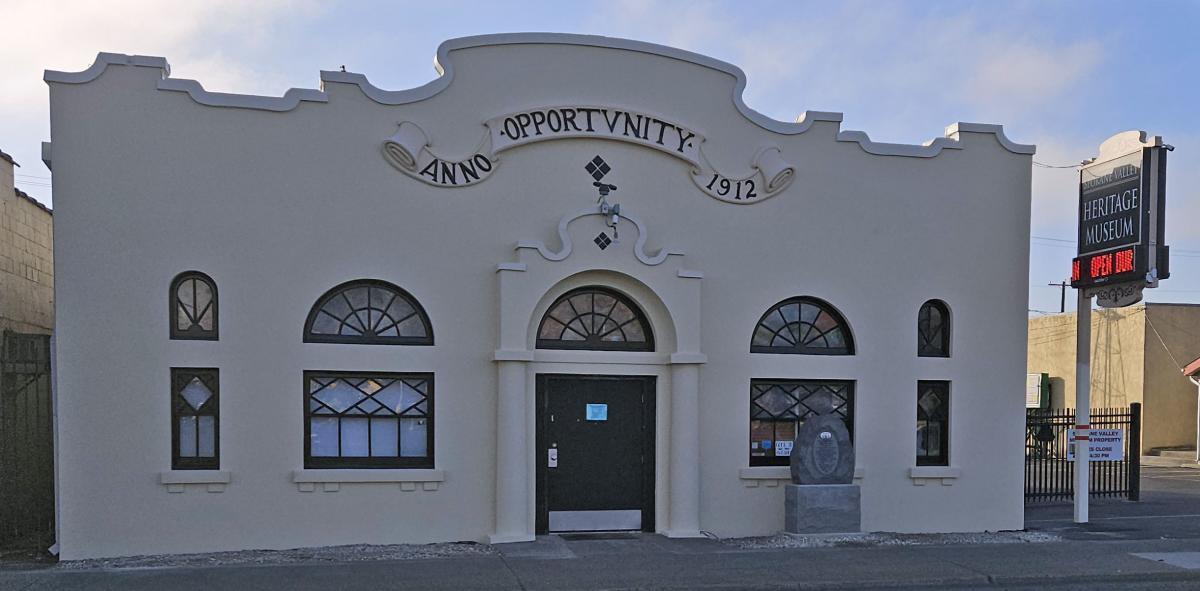 The Spokane Valley Museum is recognized for their work restoring and maintaining the historic Opportunity Township Hall building. Erected in 1912, the Spanish Colonial Revival style building served as a government building and meeting space for the former township of Opportunity, now Spokane Valley. It has been home to the Spokane Valley Museum since 2004. The museum immediately began work sanding and filling the cracked stucco. Work has been ongoing over the past 21 years, including window repair, repainting and a roof replacement, with much of the work undertaken by volunteers. A façade improvement project completed in January of this year involved stucco repair, new paint and installation of an exact replica of the scroll sign reading “Anno Opportunity 1912” above the building’s entrance, as the original was too deteriorated to be restored. The project was funded through a Sivinski grant and private donations.
The Spokane Valley Museum is recognized for their work restoring and maintaining the historic Opportunity Township Hall building. Erected in 1912, the Spanish Colonial Revival style building served as a government building and meeting space for the former township of Opportunity, now Spokane Valley. It has been home to the Spokane Valley Museum since 2004. The museum immediately began work sanding and filling the cracked stucco. Work has been ongoing over the past 21 years, including window repair, repainting and a roof replacement, with much of the work undertaken by volunteers. A façade improvement project completed in January of this year involved stucco repair, new paint and installation of an exact replica of the scroll sign reading “Anno Opportunity 1912” above the building’s entrance, as the original was too deteriorated to be restored. The project was funded through a Sivinski grant and private donations.
Heritage Barn Rehabilitation
Hall-Leander Barn, Skagit County
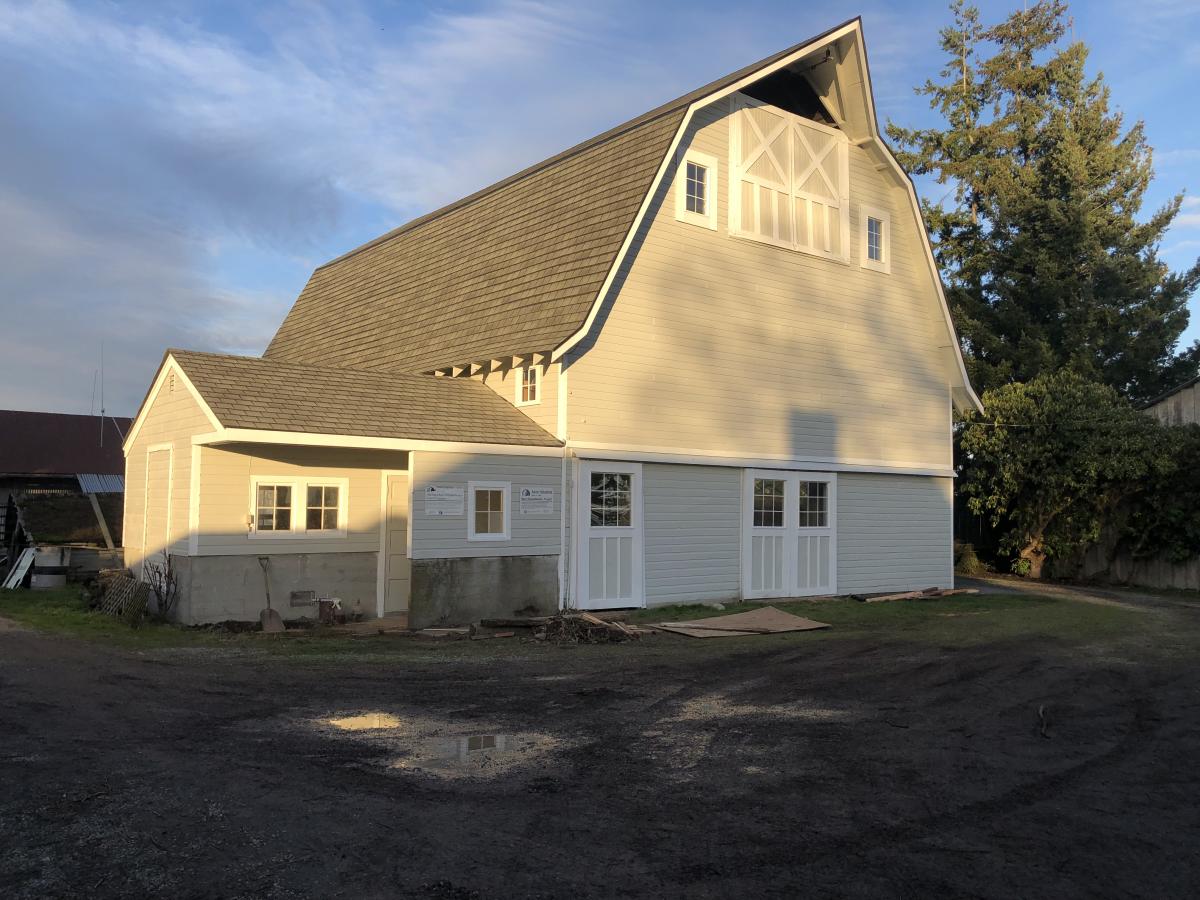 The Hall-Leander Barn is located just west of Mount Vernon, outside of the community of Avon. Originally constructed in 1915, the farm property was purchased by Wendell Leander in 1934. The barn had certainly seen better days before the current owner, Kristine Leander, undertook a comprehensive restoration project to honor her father, Wendell Leander and his decades as a Skagit Valley farmer. Work included major structural repairs, a new roof, new custom-milled siding to match the existing, the replacement of wood windows to fill long missing glazed openings, and the rebuilding of exterior and interior doors. The Hall-Leander Farm was added to the state's Heritage Barn Register, recognizing its historical significance. In August 2025, the barn's restoration was complete. The project was funded in part by a grant from the Washington State Department of Archaeology & Historic Preservation.
The Hall-Leander Barn is located just west of Mount Vernon, outside of the community of Avon. Originally constructed in 1915, the farm property was purchased by Wendell Leander in 1934. The barn had certainly seen better days before the current owner, Kristine Leander, undertook a comprehensive restoration project to honor her father, Wendell Leander and his decades as a Skagit Valley farmer. Work included major structural repairs, a new roof, new custom-milled siding to match the existing, the replacement of wood windows to fill long missing glazed openings, and the rebuilding of exterior and interior doors. The Hall-Leander Farm was added to the state's Heritage Barn Register, recognizing its historical significance. In August 2025, the barn's restoration was complete. The project was funded in part by a grant from the Washington State Department of Archaeology & Historic Preservation.
“I’m proud to honor my father Wendell Leander and his decades as a Skagit Valley farmer, along with other farmers and pioneers who immigrated to the area in the last 100+ years. In doing so they provided their families with a livelihood and strong values. Thanks to the financial help from the Washington State Historic Barn Preservation effort, I trust that our barn will continue to honor the past but also the farmers of the future who know that working the land builds strong families and communities.” - Kristine Leander
Special Achievement
Ken Calder, Point Roberts, Whatcom County
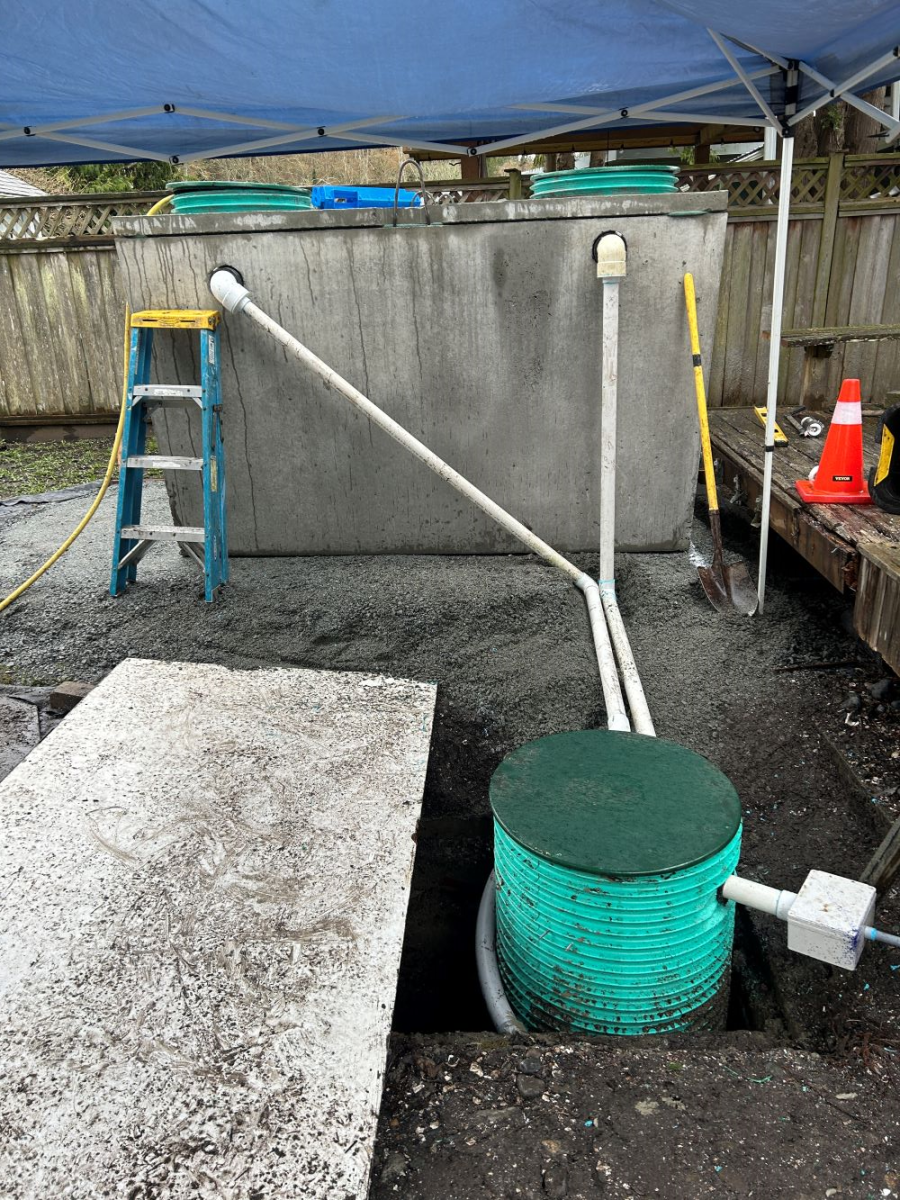 Ken Calder, owner of Ken Calder Construction in Point Roberts, is recognized for designing and implementing a fully above ground septic system that requires little to no digging for use in archaeological sites and areas of archaeological concern. Septic systems have a large cumulative impact on irreplaceable pre-contact archaeological sites, especially in Western Washington. Installation includes placing ground protection mats on grade for equipment and delivery trucks, reducing the potential for ground disturbance. A pump basin with a sewage ejection pump is installed inside the original in-ground septic tank to pump up to the new tanks. Landscape fabric is laid down and a gravel pad leveled for the new tanks to sit on. All plumbing is run above existing grade and insulated. Ken will be presenting about his septic systems at Septic-Con in January to help others in the industry understand that there are ways to work around archaeological sites with minimal to no ground disturbance.
Ken Calder, owner of Ken Calder Construction in Point Roberts, is recognized for designing and implementing a fully above ground septic system that requires little to no digging for use in archaeological sites and areas of archaeological concern. Septic systems have a large cumulative impact on irreplaceable pre-contact archaeological sites, especially in Western Washington. Installation includes placing ground protection mats on grade for equipment and delivery trucks, reducing the potential for ground disturbance. A pump basin with a sewage ejection pump is installed inside the original in-ground septic tank to pump up to the new tanks. Landscape fabric is laid down and a gravel pad leveled for the new tanks to sit on. All plumbing is run above existing grade and insulated. Ken will be presenting about his septic systems at Septic-Con in January to help others in the industry understand that there are ways to work around archaeological sites with minimal to no ground disturbance.
Leland Lauffer, Statewide Forester for the Washington State Department of Fish and Wildlife (WDFW), Kittitas County
 Leland Lauffer is recognized for his unique understanding of cultural resource importance in his work as a State Forester. He has provided open, ongoing, and meaningful consultation to tribal nations along with careful consideration of cultural resources throughout WDFW lands. He has organized and scheduled thoughtful field visits where WDFW Archaeologist, Forestry interns, and Tribal Cultural Specialist can learn and develop best practices together. Leland’s work has gone above and beyond the call of duty not only by helping to identify and locate significant archaeological resources on his time off, but by applying tribal input to forest treatment plans to better manage Traditional Cultural resources. His inclusion of tribal knowledge has benefited forest health, enhanced the archaeological inventory and helped rehabilitate important tribal resources while helping to train the next generation of foresters.
Leland Lauffer is recognized for his unique understanding of cultural resource importance in his work as a State Forester. He has provided open, ongoing, and meaningful consultation to tribal nations along with careful consideration of cultural resources throughout WDFW lands. He has organized and scheduled thoughtful field visits where WDFW Archaeologist, Forestry interns, and Tribal Cultural Specialist can learn and develop best practices together. Leland’s work has gone above and beyond the call of duty not only by helping to identify and locate significant archaeological resources on his time off, but by applying tribal input to forest treatment plans to better manage Traditional Cultural resources. His inclusion of tribal knowledge has benefited forest health, enhanced the archaeological inventory and helped rehabilitate important tribal resources while helping to train the next generation of foresters.
Leland provided the following quote, which embodies his approach to his work: “Restoring land without restoring relationship is an empty exercise. It is relationship that will endure and relationship that will sustain the restored land. Therefore, reconnecting people and the landscape is as essential as reestablishing proper hydrology or cleaning up contaminants. It is medicine for the earth.” – Robin Wall Kimmerer (2013) Braiding Sweetgrass
